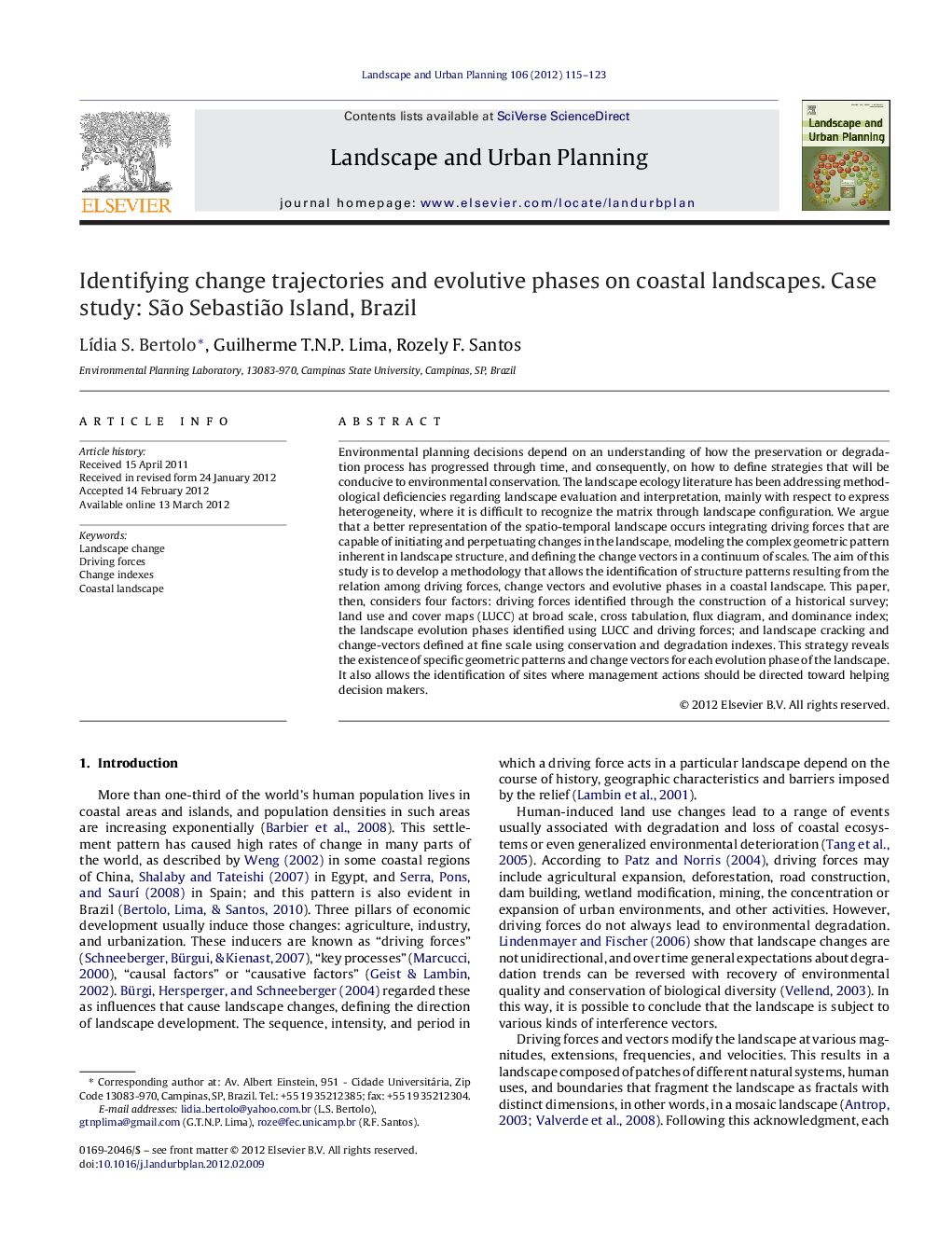| کد مقاله | کد نشریه | سال انتشار | مقاله انگلیسی | نسخه تمام متن |
|---|---|---|---|---|
| 1049509 | 945617 | 2012 | 9 صفحه PDF | دانلود رایگان |

Environmental planning decisions depend on an understanding of how the preservation or degradation process has progressed through time, and consequently, on how to define strategies that will be conducive to environmental conservation. The landscape ecology literature has been addressing methodological deficiencies regarding landscape evaluation and interpretation, mainly with respect to express heterogeneity, where it is difficult to recognize the matrix through landscape configuration. We argue that a better representation of the spatio-temporal landscape occurs integrating driving forces that are capable of initiating and perpetuating changes in the landscape, modeling the complex geometric pattern inherent in landscape structure, and defining the change vectors in a continuum of scales. The aim of this study is to develop a methodology that allows the identification of structure patterns resulting from the relation among driving forces, change vectors and evolutive phases in a coastal landscape. This paper, then, considers four factors: driving forces identified through the construction of a historical survey; land use and cover maps (LUCC) at broad scale, cross tabulation, flux diagram, and dominance index; the landscape evolution phases identified using LUCC and driving forces; and landscape cracking and change-vectors defined at fine scale using conservation and degradation indexes. This strategy reveals the existence of specific geometric patterns and change vectors for each evolution phase of the landscape. It also allows the identification of sites where management actions should be directed toward helping decision makers.
► We model landscape change vectors and geometric patterns in different scales.
► We identify driving forces; map landscape changes; create conservation, dominance and direction of change indexes; and cracking the landscape.
► We recognize change vectors and the specific patterns of landscape configuration, in different evolution phases.
► The results allow identifying the forest life time and its regeneration process.
► Those results help the selection of priority areas for management and conservation at a fine scale.
Journal: Landscape and Urban Planning - Volume 106, Issue 1, 15 May 2012, Pages 115–123